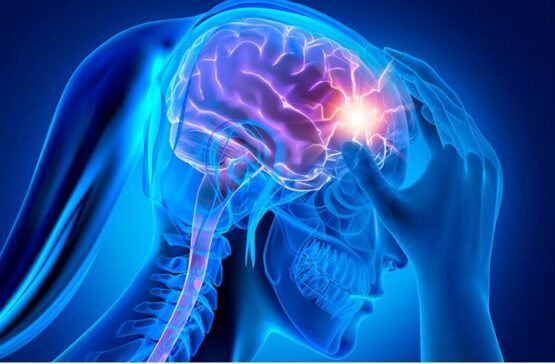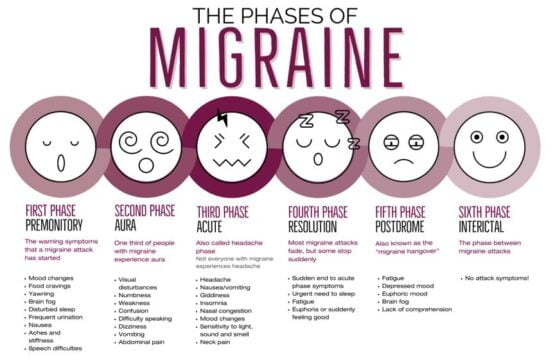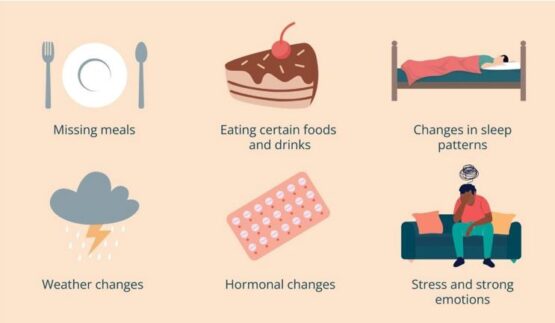On one hand, where the advancements in the field of medications and therapeutics are at their peak, different kinds of diseases and ailments, both major and minor, are also elevating. One of these commonly experienced health issues is migraine. Being a problem quite similar to a headache, migraine is one of the commonly afflicted complications with varying types and multiple associated symptoms. Let us dive in to understand what migraine is, how does it vary from a headache, and in what categories can it be divided?
What is a migraine?
Migraine is the state in which the patient experiences throbbing headaches. These aches are recurring and severe in their nature. Nausea, dizziness, and increased sensitivity to light are the problems that accompany a migraine episode. The frequency, as well as the severity of these episodes, vary from person to person. Although it affects individuals between the ages of 18 to 44 years, children can also experience migraine symptoms.

Migraine
Signs of migraine
The signs and symptoms of a migraine episode can be classified into three categories:
- Before the episode: Before an episode of migraine starts, the person may start feeling depressed and emotionally agitated. Additional symptoms include:
- Increased thirst
- Food cravings
- Bloating
- Muscle stiffness
- Increased frequency of urination
- Sensitivity to light
- The appearance of an aura i.e. flashing light within the vision field
- Agitation to loud sounds
- Dizziness
- Vivid dreams
- Difficulty in concentrating
All of these signs are collectively called ‘prodrome’.

Phases of migraine
- During the episode: Once the migraine starts, the patient experiences a pulsing headache which sometimes progresses towards the neck region, along with feeling nauseous. Some individuals may also experience nasal congestion.
- After the episode: Once the actual migraine phase is over, the patient still feels irritated for a day or two. The experiencing of these symptoms is termed a ‘migraine hangover‘ and this phase is called ‘postdrome’.
Furthermore, patients also complain about some additional migraine symptoms such as:
- Diarrhea
- Stomach pain
- Sweating
- The feeling of hotness or coldness
What causes migraine?
Migraine can start in an individual due to a group of reasons including genetic factors, having a family history, use of certain medications, stressful lifestyle, etc. Although every individual going through migraine episodes have different triggers, some of the common ones are as follows:
- Research has also indicated that the modifications within the brain such as the neural connections, concentrations of the neurotransmitters, as well as vasodilation and vasoconstriction of the cerebral blood vessel, are the primary indicators that initiate migraine episodes.
- Changes in the endogenous chemicalse. hormones e.g. during menstruation can be a major reason owing to the start of migraine. Similarly, patients on hormone replacement therapy are also prone to experiencing the symptoms of migraine.
- Emotional experiences such as anxiety, stress, depression, or excitement may become a contributing factor to migraine.

Triggering factors of migraine
- Excessive use of certain foods in your diet such as caffeine, chocolates, nuts, cheese, foods high in tyramine and monosodium glutamate, as well as citrus fruits could be responsible for migraine.
- Too much consumption of alcohol can be a trigger.
- Additionally, environmental factors such as bright lights, loud noises, strong unpleasant smells, humidity, smoke, flickering screens, etc. could also serve as a basis for migraine.
Types of migraines
Migraines can be classified into many categories which are as follows:
- Menstrual migraine: In menstrual migraine, the episode is synchronized with a woman’s period. The pain starts a few days before the period and lasts for 4 to 5 days.
- Abdominal migraine: This type of migraine has a symptom that is quite unusual i.e. stomach ache. This type of migraine is mostly detected in children.
- Hemiplegic migraine: Hemiplegic migraine is associated with the numbness of certain body tissues causing the inability to move for a short period of time. Dizziness or vision changes may also be experienced.
- Silent migraine: Silent or acephalgic migraine initiates with the appearance of aura which is its main symptom. Although the patient may experience nausea along with the other symptom.
- Ocular migraine: Ocular, retinal, or ophthalmic migraine is a short-lived headache that causes a total loss of vision in one eye. The patient experiences pain behind the eyes along with vision changes.
- Ophthalmoplegic migraine: In this type of migraine, the eye muscles are paralyzed. Pain can be experienced behind the eyes. Symptoms include double vision, droopy eyelids, and vision changes.
- Migraine with brainstem aura: This type of migraine affects the back of your head. Symptoms include dizziness, loss of balance, and confusion.
- Vestibular migraine: If a person has a history of motion sickness, she or he becomes more prone to vestibular migraine. The symptoms include vertigo, nausea, vomiting, and balance problems.
- Status migrainosus: Status migrainosus is a severe type of migraine that, in most cases, lasts up to 3 days. It is hard to manage it without medications and the patient may need to be admitted and constantly medicated to alleviate the symptoms.
Treatment
There are no available treatments for migraines but the modifications in the lifestyle along with management of these headaches can help improve the patient’s quality of life. It is essential for a person to identify her or his triggers and avoid them as much as possible. However, the symptoms associated with migraine can be managed by medications.
How to get rid of migraine?
If a migraine episode starts, the patient should take the following measures:
- Rest in a dark room,
- Avoid bright light including the one coming from your smartphone
- Reduce physical activity and lying down
- Take prescribed medications or, if the symptoms do not subside, contact your physician
Migraine vs. Headache
A migraine and a headache, despite sounding quite identical, are very different when it comes to experiencing them. Based on the evaluation of their symptoms, a physician differentiates a headache from a migraine. If one experiences pain in the head, the answer to the following questions must be noticed and jotted down:
- At what time the symptoms started?
- Are you stressed these days?
- Are you menstruating?
- What is the nature of your headache?
- What are the symptoms you are experiencing?
- How long do the symptoms last?
- Are you experiencing aura?
- Are you on medications? What sort of drugs are you using and why?
Conclusion
Migraine is a common type of headache these days. Owing to the increase in its common triggers such as flashing billboards, loud noises on the streets by uncontrolled rise in traffic, as well as skyrocketing air pollution, a large percentage of the world is at risk of experiencing migraines. However, knowing its signs and symptoms, a person can self-identify the problem and timely seek medical help for migraine relief.

PhD Scholar (Pharmaceutics), MPhil (Pharmaceutics), Pharm D, B. Sc.
Uzma Zafar is a dedicated and highly motivated pharmaceutical professional currently pursuing her PhD in Pharmaceutics at the Punjab University College of Pharmacy, University of the Punjab. With a comprehensive academic and research background, Uzma has consistently excelled in her studies, securing first division throughout her educational journey.
Uzma’s passion for the pharmaceutical field is evident from her active engagement during her Doctor of Pharmacy (Pharm.D) program, where she not only mastered industrial techniques and clinical case studies but also delved into marketing strategies and management skills.
Throughout her career, Uzma has actively contributed to the pharmaceutical sciences, with specific research on suspension formulation and Hepatitis C risk factors and side effects. Additionally, Uzma has lent her expertise to review and fact-check articles for the Health Supply 770 blog, ensuring the accuracy and reliability of the information presented.
As she continues her PhD, expected to complete in 2025, Uzma is eager to contribute further to the field by combining her deep knowledge of pharmaceutics with real-world applications to meet global professional standards and challenges.








